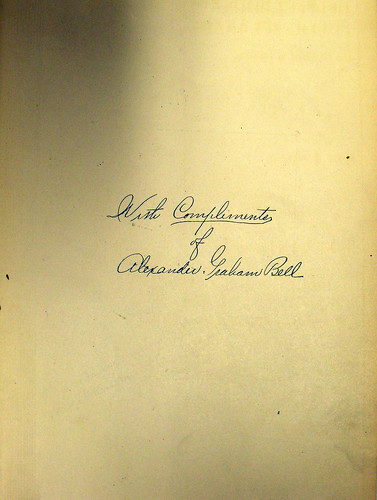Alexander Graham Bell
Alexander Graham Bell: Lectures upon the mechanism of speech
New York; London: Funk and Wagnall, 1906
This volume is the author's presentation copy and is inscribed by him on the front flyleaf. Alexander Graham Bell (1847-1922) was a teacher of the deaf and inventor of the first patented electric telephone. He was born on 3 March 1847 in Edinburgh which he left in 1852 to stay in London with his grandfather, an elocutionist and author and a major and positive influence on his life and career.
In 1867 Bell also began to work as an elocutionist, specializing in teaching the deaf. In 1870 he emigrated, first to Canada, then to the USA, where he continued work for deaf people and became a naturalized American citizen in 1874.
Bell became interested in a system of visible speech and developed the concept of a multiple, harmonic telegraph, using tuned reeds, which allowed a number of telegraph messages to be sent simultaneously over a single wire by means of interrupted tones of different frequencies. He was inspired by demonstrations of Koenig's manometric flame apparatus, Scott's phonoautograph, which produced visual images of sounds, and the Reis telephone, which used a membrane diaphragm as the transmitter. These inventions encouraged him to to keep experimenting and about October 1874 he produced his ear phonoautograph which utilized the human eardrum. On 2 June 1875, Bell's first membrane diaphragm telephone transmitter produced speech sounds.
This volume consists of a series of lectures by Bell about promoting the teaching of speech to the deaf.

Image: Inscription in Alexander Graham Bell's Lectures upon the mechanism of speech.
Go to the next book in the exhibition, previously owned by: Marie Curie.


